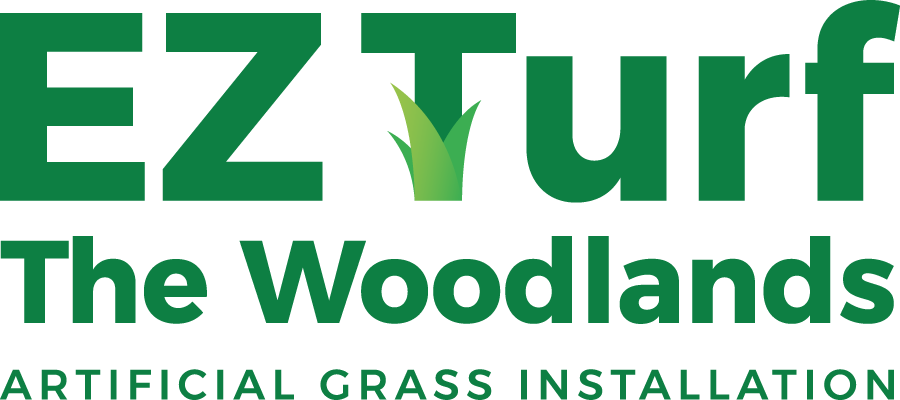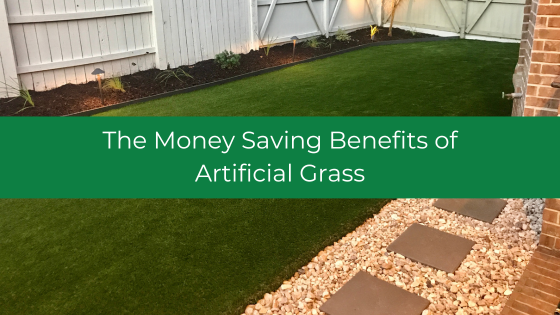Artificial grass offers significant cost savings to property owners by reducing the water bill and lawn maintenance costs.
Surveys suggest that homeowners spend between $65 and $150 every month on lawn care. That means the typical homeowner can save $1,000 or more every year by switching to artificial grass. Commercial properties such as golf courses, playgrounds and parks can save much more with artificial turf.
Breaking Down the Cost Savings of Artificial Turf
Size is the most important factor when calculating savings, as larger lawns require more water, mowing and landscaping to keep them looking nice.
However, there is another factor to consider, and that’s the amount of special care your lawn requires. In some areas, weeds or pests can be a constant nuisance and require extra upkeep to manage. Some lawns include additional obstacles that can increase the cost of landscaping services, such as playground equipment, sidewalks, paths and fencing. If your lawn falls into either of these categories, reducing maintenance costs with artificial grass will have a larger impact on your bottom line.
Here’s a closer look at how property owners can be cost-effective with artificial turf:
- Watering costs – The Synthetic Turf Council estimates that a 1,000 square foot patch of natural grass requires about 50,000 gallons of water a year.
According to HomeAdvisor, the average size of a Texas backyard is 7,552 square feet. Not all of the 7,552 square feet requires watering, but the typical Texas homeowner uses hundreds of thousands of gallons to maintain their yard throughout the year.
Of course, that number is much higher for commercial properties. An average central Texas golf course consumes about 350,000 gallons of water in just one day, according to research published in Texas Monthly.
Factor in rising water rates and rising temperatures and it’s standard to spend hundreds every year on lawn watering, and that’s just for homeowners.
Additional lawn care costs that aren’t needed with artificial grass include:
- Landscaping services
- Seasonal leaf and debris clearing
- Fertilizers and pesticides
- Weed removal
- Soil aeration
Add it up, and homeowners can expect to pay more than $1,000 for their yard care every year. For commercial property owners, the maintenance costs are much higher.
A Long-Term Cost Comparison Between Artificial Grass and Natural Grass
Artificial grass provides a rapid return on investment, so as soon as turf is installed, it starts making up ground.
In Texas, it costs around $10 per square foot to install artificial grass. Typical installation costs vary with the size of your property but expect to spend between $5,000 and $10,000.
While there is the initial upfront cost, remember that artificial lawns offer a savings of between $1,000 and $1,500 every year on lawn maintenance and watering costs. As high-quality artificial turf last for 10 years or more, you can save over $10,000 on maintenance during the turf’s life. In the end, property owners come out ahead.
Professional Artificial Turf Installation Will Increase Your Cost Savings
There are several benefits of hiring professionals for your artificial grass installation job. For example:
- Professional turf installers can provide high quality artificial grass products – turfs designed (and warrantied) to last for more than a decade.
- Expert turf installers have the manpower, equipment and skill to guarantee a sharp, clean look.
- If your artificial grass will be used as a play surface or for another specialized purpose – such as a golf course – you’ll need a professional installer to lay down the right infill and backing materials. For instance, playground turf needs a shock absorption layer to be compliant with safety standards.
Those are all important reasons to hire a professional team, but there’s another one – cost savings. Yes, expert installation comes with its own price tag, but installation mistakes by DIYers are much costlier. If your artificial grass isn’t installed using best practices, it may pull away from the edges or at the seams following wear or weather. The turf may buckle in spots, or it may not be cut precisely enough on the edges to wear evenly.
These issues can be expensive to fix, which is why many property owners avoid the risk entirely and hire an experienced crew to manage the artificial grass installation process.
By switching to artificial grass, property owners can save a lot of money, especially when it’s installed by reputable artificial turf professionals.
- What Are The Benefits of Gym Turf for Workouts? - December 10, 2025
- How Do I Choose a Commercial Artificial Grass Installer? - November 11, 2025
- Choosing The Right Turf For My Playground Area - October 23, 2025

